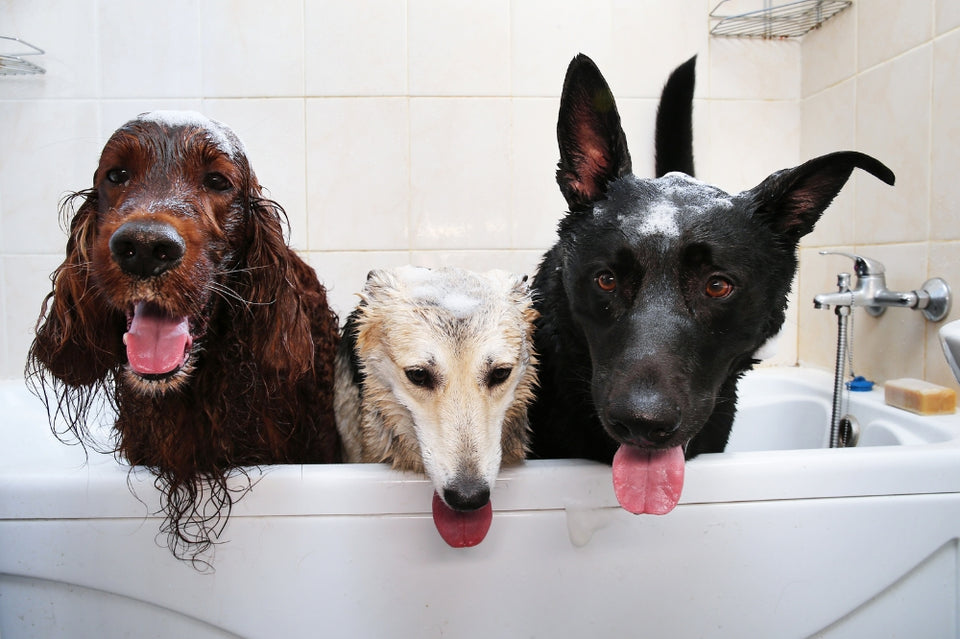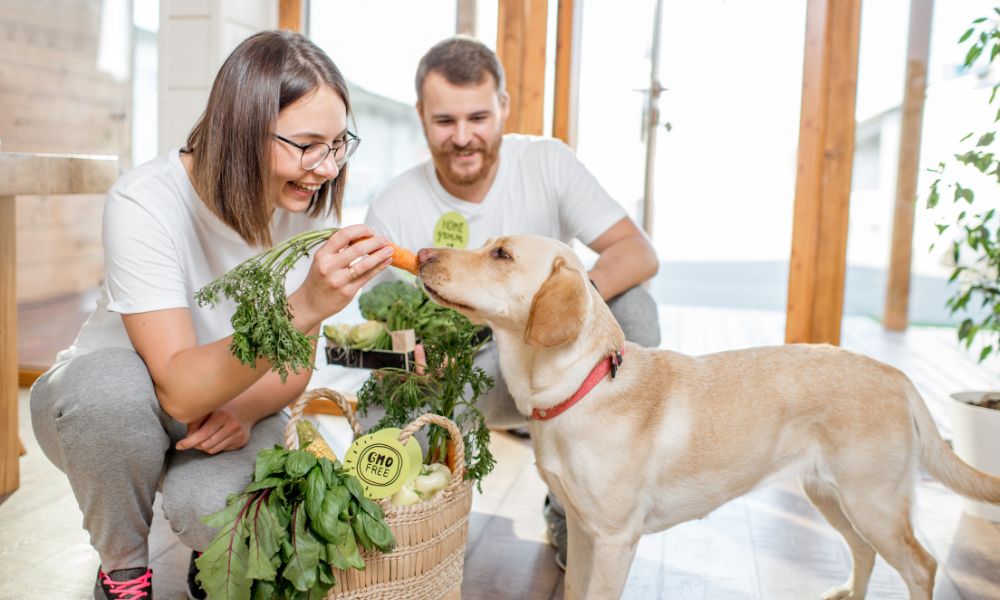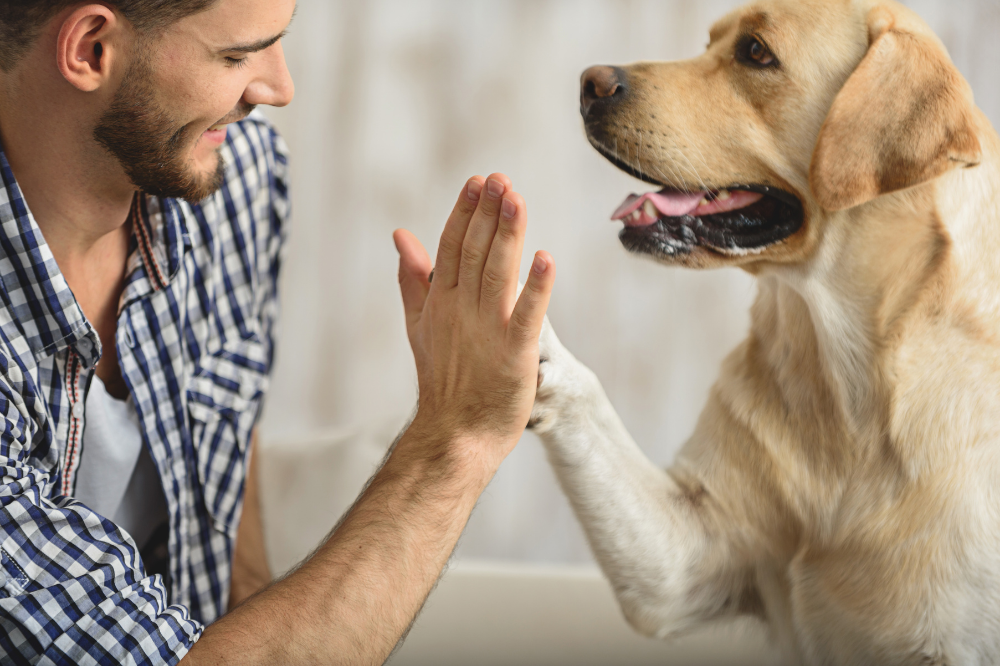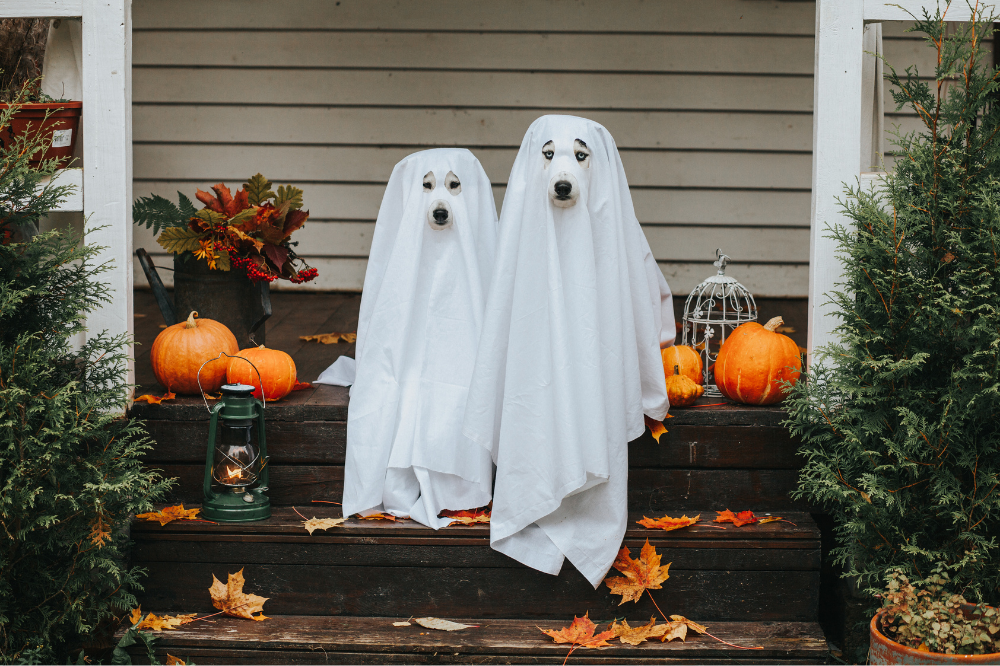
The Dirty Truth About How Often You Should Bathe Your Dog

How often should you give your dog a bath? Conventional wisdom says that a healthy dog with a low-maintenance coat shouldn’t be washed more than once a month. But on the flip side, one study found that more than half of pet parents don’t bathe their dogs often enough. While your pooch would no doubt be happy to avoid bath time as much as possible, as a member of your family, they’re living in your house, lounging on your furniture, and sleeping in your bed. As a pet parent, you naturally want your cuddle buddy to be clean.
So why is the advice so confusing?
Not bathing your pup too often is actually good advice — if, that is, you’re using a standard shampoo that’s loaded with harsh chemicals and detergents that strip the natural oils from skin and fur. But natural dog shampoo that’s free of sulfates and potentially harmful ingredients not only won’t strip natural oils, it will also help hydrate and moisturize, freeing you to wash your dog as often as needed without any worries about damaging their skin — or their health.
Why you should bathe your dog more often
We hate to break it to you, but dog fur is actually pretty gross. If you’re not bathing your doggo regularly, you probably don’t want to know what you’re coming into contact with when you kiss that squish and bury your face in all that neck fur. But we’re going to tell you anyway, because knowledge is power — in this case, the power to keep your furry bestie from being a walking germ bomb.
The majority of pet parents rely on the “sniff test” to know when it’s time for a bath. But by the time Fido’s noticeably stinky, he’s been walking around for days carrying bacteria and other yuck in his fur, and spreading it to whatever he comes into contact with. Here’s just a sampling of the unpleasantness that becomes trapped in your pooch’s fur on a regular basis:
- Bacteria like salmonella, E coli and bordetella, which causes a cold-like illness known as kennel cough
- Yeast, mold and other funky fungi, like aspergillus and candida albicans, which can cause serious illness
- Parasites like fleas and ticks, as well as flea eggs
- Microbes
- Feces
- Dirt and debris
- Dander, pollen and other allergens
How often should you bathe your dog?
How frequently you bathe your pup may depend on a few different factors.
Breed
While all dogs can benefit from weekly baths with a shampoo that’s gentle on their skin, some dog breeds may need baths more often than others. Breeds like basset hounds, cocker spaniels and Labrador retrievers, for example, have oily skin that makes them prone to seborrhea, a condition caused by oil buildup that can cause itchy, flaky or scaly skin, hot spots, skin irritation, dull coat and hair loss. At the same time, an oily skin and coat helps to protect these breeds against the elements, so you don’t want to strip the oils completely. Bathing them once a week with a gentle, natural anti itch shampoo will help control the oil buildup without stripping the oil from their coats.
Coat type
Generally speaking, dogs with higher-maintenance coats, including long haired breeds, curly-haired dogs and double-coated breeds, will need baths more often than short haired dogs and smooth-coated breeds. Bathing hard-to-handle coats more often and using conditioner will help make them more manageable.
With coat length as a general guideline, you would think that hairless dog breeds, like the American hairless or the Chinese crested, would be the most low-maintenance dogs of all. But because these pups don’t have fur to protect their skin, they actually require weekly baths with a moisturizing shampoo to keep their skin from drying out and to protect them from irritants.
Lifestyle
Naturally, your adventure dog is going to get dirtier and need to be washed more often than your couch spud. Even dogs confined to the back yard have more opportunities to splash in mud puddles and roll in dirt and other unmentionable things, picking up smells, germs, allergens and other things that you probably don’t want them bringing inside. As long as you use non-drying natural dog shampoo, you can feel free to give your outdoorsy pup as many baths as needed to help them stay clean and easier to live with.
Health issues
If your dog suffers from allergies or skin issues, your veterinarian may prescribe a medicated shampoo to treat their condition. In this case, you should refer to your vet’s instructions and the directions on the shampoo label for how often to give your dog a bath. Otherwise, washing your itchy pup at least once a week with a soothing anti-itch shampoo will help them find relief.
It’s not just your pet’s health that you need to consider. Frequent dog baths will help any people living with your dog who suffer from dog allergies. And even if nobody in your home is allergic to dogs, any time your pooch goes outside, their fur collects pollen and other potential allergens that can make the humans in your home sneeze and sniffle.
How well your dog handles baths
One reason so many pet parents don’t bathe their dogs as often as they should may be that their big babies simply hate taking baths. We get it — some dogs turn into total drama queens if they even hear you whisper “B-A-T-H.” But waiting so long between baths might only make it worse. Bathing your tantrum-throwing pooch more regularly as part of a weekly routine will help desensitize them to it.
If your dog legitimately suffers from anxiety that makes bath time a traumatic experience — for you as much as for them — ask your vet about ways to help them get through bath time without fear. Otherwise, here are a few tips that can make baths more palatable for your bath-resistant pup:
- Make the bath area a fun place. Lure your pup to the tub with treats, or try feeding them in the tub. While they’re there, engage them with their favorite toy.
- Work up to baths slowly. While they’re having a fun time in the tub, turn the water on, just for a second. When they can handle that without running away, try leaving it on. Once they’re okay with that, try splashing them with it, and then wetting one paw, and so on, until they can stand getting their whole body wet.
- Peanut butter is your secret weapon. Smear some on the tile and let your furry kiddo lick away while you lather, rinse and repeat. Just be sure it’s the natural, unsalted kind that doesn’t contain any extra ingredients that aren’t good for doggy health.
- Leave the head for last. Chances are, your pupper hates baths so much because they hate getting their head wet. Water can get in ears and noses and irritate eyes, even when you use tear free dog shampoo. Once you’ve dunked their head, they’re ready to be done. So let that be their signal that bath time is nearly over.
- Get their zoomies out. Make the bath the meat in a fun sandwich, ending with fun just as you started. Take your clean pup out to the yard or to a part of your home where they can shake it off, zoom around and try to rub off all those nice smells.
How often should you bathe your puppy?
Puppies don’t typically start to develop “dog smell” until they’re between six to twelve months old, so unless they get really dirty, younger puppies don’t actually need baths. However, the younger they are when they’re exposed to the whole concept of taking a bath, the better. Working up to bathing your puppy with a gentle shampoo while they’re little will make it easier on you both when they’re old enough to start needing regular baths.

Signs your dog needs a bath
Stinkyness and visible dirt are obvious signs that it’s time for a bath. Here are some less obvious signs that a bath might be in order:
- Itching and scratching
- Biting and licking their fur
- Finding a flea or tick
- Finding debris in the fur
- Tangled or matted fur
- Dandruff or flaky skin
And if you or any humans in your household start sniffling, sneezing or itching around your pooch, or if being around them makes allergy symptoms worse, bathing your dog might help.
When to use a professional
DIY dog grooming isn’t for everyone. If your dog’s coat requires expert handling, or if behavioral problems make bathing your dog too much to handle, it might be time to leave it to the pros. When selecting a groomer for your pup, ask what type of shampoo and conditioner they use, and what kind of ingredients they contain. Or better yet, ask if you can supply your own grooming products. Most professional dog groomers will be fine with using your preferred shampoo and conditioner on your fur baby.
Keeping your best fur bud clean is good for your health and wellbeing as well as theirs. What a great feeling for pet parents to know they can enjoy a clean pup with no worries about exposing them to harsh chemicals or drying out their skin.
Share this article
written by


